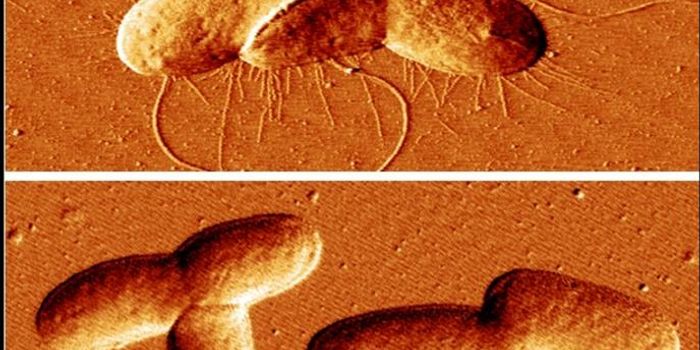What if a metal's surface could kill bacteria immediately?
A new study published in the journal Advanced Materials Interfaces is now more relevant than ever. The researchers from Purdue University who conducted the study have developed a laser treatment that is capable of making metal surfaces deadly to bacteria. How does it work? It changes the texture of a metal’s surface.
"Copper has been used as an antimicrobial material for centuries. But it typically takes hours for native copper surfaces to kill off bacteria," said Rahim Rahimi, a Purdue assistant professor of materials engineering. "We developed a one-step laser-texturing technique that effectively enhances the bacteria-killing properties of copper's surface."
Now don’t jump so fast – this technique can’t kill COVID-19, at least not yet. Viruses are much smaller than bacteria, making it more complicated to kill them off. However, the researchers did demonstrate how this technique can kill superbugs like MRSA with immediate effectiveness.
Rahimi and the rest of the Purdue team were able to create a rugged texture on copper’s surface using a laser that etches nanoscale patterns. With an amplified surface area, there is more space for bacteria to come into contact with the metal. Watch the video below to see how it works.
"We've created a robust process that selectively generates micron and nanoscale patterns directly onto the targeted surface without altering the bulk of the copper material," explained Rahimi. Additionally, the texturing process makes the surface significantly more hydrophilic, which provides an opportunity to expand the uses of this technique – doorknobs aren’t the only surface that could benefit!
In fact, Rahimi’s team develops materials intended to improve biomedical devices like orthopedic implants. Utilizing this technique with orthopedic implants or wearable patches could reduce the risk of bacterial growth and biofilm formation and prevent the spread of infection and antibiotic resistance.
The researchers hope their findings will improve medical device manufacturing processes and promote safe and sanitary practices.
Sources: Advanced Materials Interfaces, Eureka Alert









